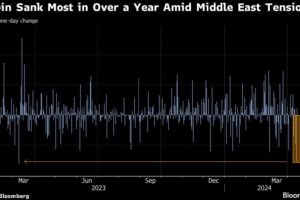
As Bitcoin (BTC) finally broke out of the $46,000 resistance on March 27, traders were quick to conclude that the bearish trend was gone for good. Even as the price hit its highest level in 84 days, derivatives metrics and Asia’s Tether premium still show a lack of bullish sentiment.
While analysts will struggle to find a rationale for the modest 5.8% 24-hour gain that pushed Bitcoin above $48,500, we still have to account for the daily 3.8% average volatility.
For instance, over the past 12 months, BTC presented a daily swing higher than 5.8% in 44 instances, ranging from a negative 14.4% on May 19, to a 14.6% price increase on Feb. 28.
Bitcoin’s rally caused the broader crypto market capitalization to hike 15.3% over the past week, reaching $2.2 trillion. Curiously, Bitcoin gained 15.7% and Ether (ETH) 15.8%, pretty much in line with the altcoin’s average.
Still, they were no match for the altcoin rally that followed. Below are the top gainers and losers among the 80 largest cryptocurrencies by market capitalization.
Weekly winners and losers among the top-80 coins. Source: Nomics
Zilliqa (ZIL) announced a partnership with payments infrastructure provider Ramp, and is expected to release its metaverse project called Metapolis which will be built on unreal gaming engine, the same 3D technology behind Fortnite and PlayerUnkown’s Battlegrounds, or PUBG.
Loopring (LRC) price surged by 51% after GameStop’s upcoming NFT marketplace integrated the Loopring network on March 23 and Axie Infinity (AXS) rallied 41% as the team outlined plans to progressively give control over the project’s treasury and governance control.
Axie is also expected to launch the Origin game over the next couple of weeks, which includes a reimagined storyline and the addition of active cards for eye and ear body parts.
Tether premium indicates weak retail demand
The OKX Tether (USDT) premium is a good gauge of China-based retail trader demand for crypto. It measures the difference between China-based USDT peer-to-peer trades and the official U.S. dollar currency.
Excessive buying demand tends to pressure the indicator above fair value,…
..






